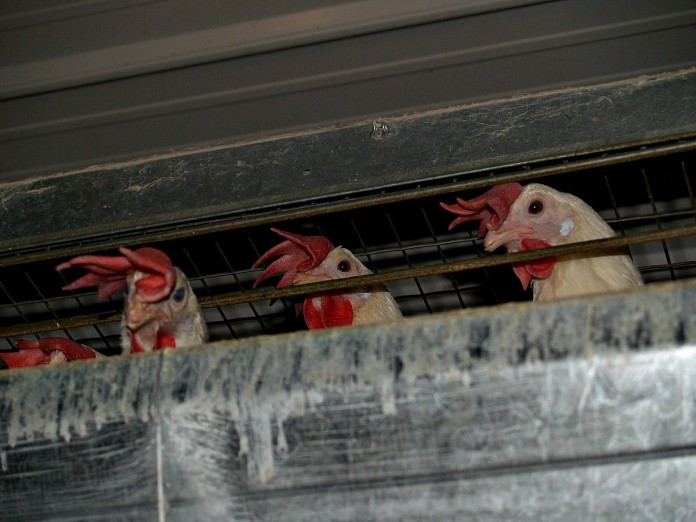SALEM, Ohio — If the USDA is correct, consumers can expect to see more chicken in the marketplace.
According to the USDA, egg sets and broiler-type chicks placed for meat production in the United States rose by 3 percent at the beginning of November.
In addition, hatcheries in the United States set 206 million eggs in incubators during the week of Nov. 8, which was up three percent from 2013.
Broiler growers in the United States reportedly placed 166 million chicks for meat production, which was also up by 3 percent from November 2013.
Chris Hurt, professor of agricultural economics at Purdue University, said his research shows that chicken production may be gaining due to two factors: lower grain prices and a low beef supply.
Feed prices
Hurt said feed prices starting increasing around 2007, which created narrow or negative margins for livestock farmers. In turn, farmers culled or cut back their herds and flocks.
The ongoing drought in portions of the U.S. also tightened livestock numbers. Hurt said that from 2007 to 2014, beef, as a species, has had the biggest reduction in available meat supplies.
The limited supply and ongoing demand pushed prices of animals and animal products to record high levels in 2014.
As a result, consumers cut back on their purchases, and now in 2014, the U.S. per capita meat consumption is 203 pounds, down about 30 pounds per person per year or about 10 percent.
Hurt added that chicken is much cheaper than beef or pork, so some consumers are substituting more chicken for beef and pork.
Now that feed prices have moderated and animal prices are at record high, there’s an opportunity for high, and even record high, profits for the livestock and poultry industries, Hurt said. The market signals are strong incentives for expansion and the poultry industry can do that the quickest.
Beef production
Hurt added that beef production is the only animal production that is expected to drop in 2015. He said some analysts believe beef expansion has started with the initial increase in retained heifers.
However, due to the fact that cattle have a nine-month gestation and then 1.5 to 2 years of growing out — that doesn’t mean an immediate increase in the amount of beef on the market. A heifer retained this fall cannot increase the beef supply until about 2017.
Ohio insight
John R. Metzger, chief executive officer and president for Kidron, Ohio-based Gerber’s Amish Farm Chicken, said the processor is producing 80,000 birds, five days a week but “we’re always trying to ramp up production.”
Metzger said Gerber’s has been sold out for the past two years and expects to see the trend continue. Gerber’s Amish Farm Chicken produces an antibiotic- and hormone-free product, which can be considered a premium product in the marketplace.
He said Gerber’s is expecting to pick up between 30,000 and 50,000 more birds a week in 2015.
“We have a strong demand. Consumers want our product,” said Metzger.
Metzger cautioned, however, that the increase in chicken production may not benefit farmers in the end, if the result is over-production and lower farm prices, which is what happened in 2011 when producers decided to increase production by more than the annual 3 percent needed.
When grain prices fall, larger producers jump to increase production, thinking profitability is back. But the additional production hurts the market and prices fall because of too much product on the market.
Turkey production
Turkey growers are also expected to start building their flocks, as the USDA reported turkey production at its lowest level since 1986.
According to the USDA National Agricultural Statistics Service, turkey producers grew 235 million birds, which was the lowest number since 1986 when U.S. farmers produced 207 million birds.
However, with this year’s record corn harvest and lower grain prices, producers are expected to begin rebuilding their flocks in 2015 especially because rebuilding a flock only takes three to five months.










